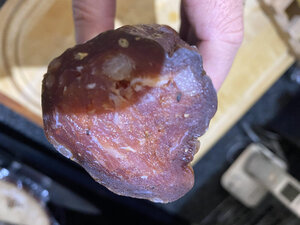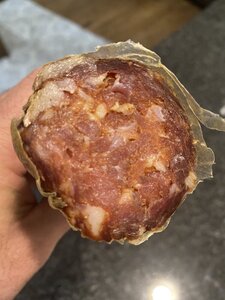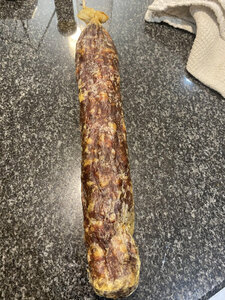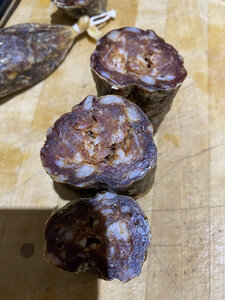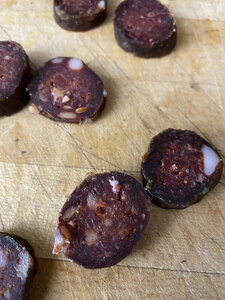Hi Everyone, Newbie here, so please bear with me.
I built a curing chamber, fitted with dehumidifier and humidifier controlled by inkbird controllers. The curing chamber is a one of those industrial fridges with a compressor on the top. I made salamis a while back and they seem to have case hardening, the middle is still raw and they have lost more than 40% weight (they do taste good). Temperature and humidity at recommended levels (humidity between 75-85 and temp between 51.8 - 59 F) although the fan on this fridge runs all the time. I did replace the fan to a less powerful computer fan and connected it to a fan controller, I had it at the lowest setting. I thought the problem was the fan running constantly so I put the fan on timer to run for 30 minutes every 4 hours. At that point I let the salamis cure for another two weeks which was the the wrong decision as they seem to have all gone bad. I also recently made some cured sausages after the installing fan on timer and the moisture retention was better but there was still case hardening. Does anyone know what the problem is?
I did not use mold 600 although(I can't find it anywhere to purchase in Canada)
I did not use any cultures
I don't have a fresh air intake/outake in chamber but I open it at least once a day..
I used 18 grams of readycure per kilo of meat.
See attached pictures
Thanks Danny
I built a curing chamber, fitted with dehumidifier and humidifier controlled by inkbird controllers. The curing chamber is a one of those industrial fridges with a compressor on the top. I made salamis a while back and they seem to have case hardening, the middle is still raw and they have lost more than 40% weight (they do taste good). Temperature and humidity at recommended levels (humidity between 75-85 and temp between 51.8 - 59 F) although the fan on this fridge runs all the time. I did replace the fan to a less powerful computer fan and connected it to a fan controller, I had it at the lowest setting. I thought the problem was the fan running constantly so I put the fan on timer to run for 30 minutes every 4 hours. At that point I let the salamis cure for another two weeks which was the the wrong decision as they seem to have all gone bad. I also recently made some cured sausages after the installing fan on timer and the moisture retention was better but there was still case hardening. Does anyone know what the problem is?
I did not use mold 600 although(I can't find it anywhere to purchase in Canada)
I did not use any cultures
I don't have a fresh air intake/outake in chamber but I open it at least once a day..
I used 18 grams of readycure per kilo of meat.
See attached pictures
Thanks Danny


